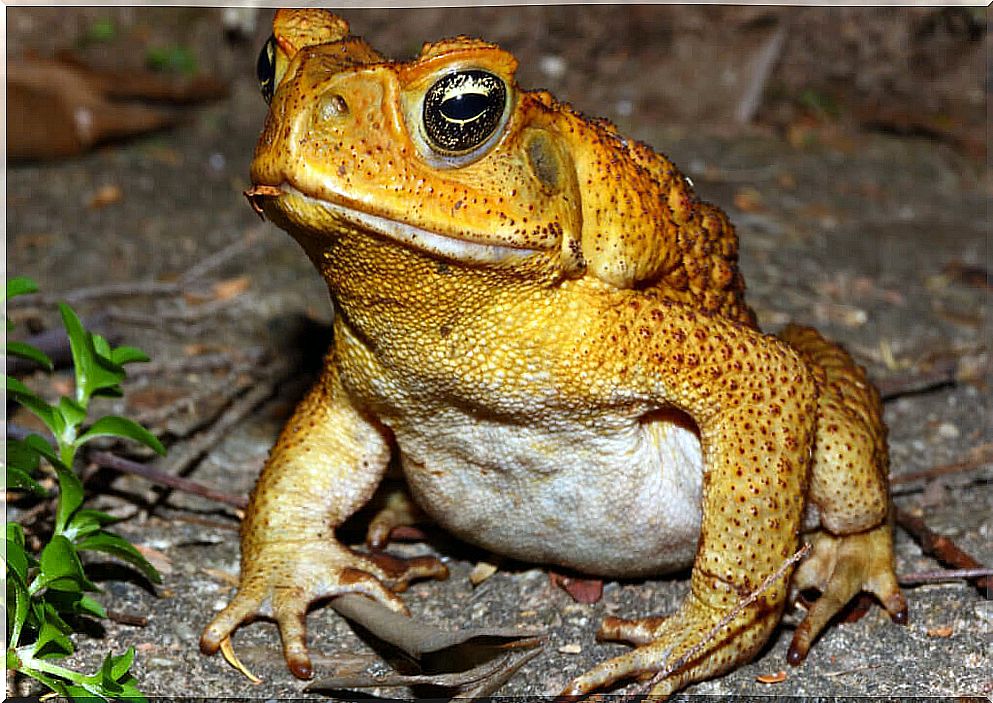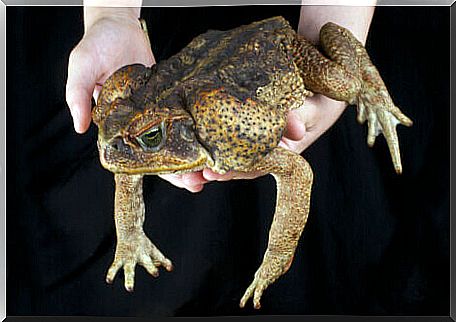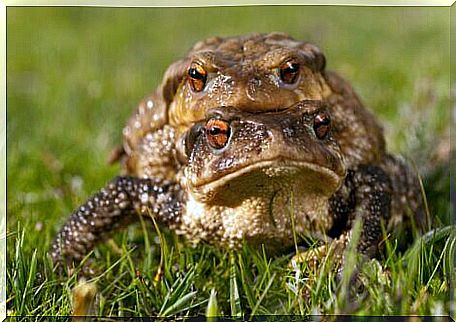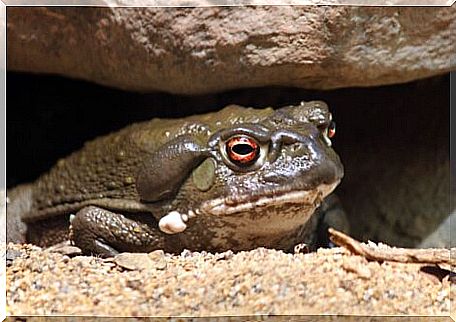4 Species Of Poison Frogs

Frogs are robust, plump amphibians that tend to be less water-dependent than frogs. These frogs are usually very slow and vulnerable to predators. Therefore, frogs have developed a defense in the form of toxins located in the skin, which make them poisonous.
More precisely, the warts that give frogs their characteristic appearance are glands that harbor various toxic compounds. When disturbed, these small vertebrates can secrete venom through them, a milky-looking poison with a viscous consistency.
While it is necessary to be careful with pets or small children, frogs are generally not dangerous because their venom is just a self-defense mechanism. If you want to learn more about some poisonous frog species, read on.
The 4 most interesting species of poison frogs
Although most frogs are of no medical importance, poison is a common tool among them. Following are some relevant venous species.
1. Cane toad ( Rhinella marina )
Native to Central and South America, this frog was introduced by humans to many other parts of the world. These actions have made it one of the worst invasive alien species on the entire planet.
Cane toads have a very powerful venom, which is stored mainly in their huge parotid glands, located behind the head. In the Cane Toad’s native area, predators have evolved to tolerate this venom, so they can consume these amphibians.
However, predators from other areas die when trying to eat them, so cane toads expand without limits. As you can imagine, this creates serious problems for ecosystems.

2. Common toad or European toad ( Bufo bufo )
Although smaller and less problematic than the Cane Toad, the Common Toad is another frog whose venom can harm small animals. Its toxins have a bad taste, and cause nausea, vomiting and heart failure in extreme cases.
These charismatic animals are very peaceful. They live their lives peacefully in the shelter of the night, when they come out of their hiding places to feed on invertebrates or reproduce in ponds.
The venom of these animals is composed of bufotoxins and bufogenins, among other chemical substances. The exact composition of toxic secretions is different in natural or man-made habitats.
Interestingly, the otters that eat these animals have learned to skin first, to avoid ingesting the toxins. When an animal develops a defense response, its predator will surely learn to avoid it.

3. The Incilius alvarius species
This is the largest native frog in the United States, measuring between 11 and 19 centimeters. Its skin is hard and leathery, olive green in males and mottled brown in females. Inhabits the southwestern United States and northwestern Mexico.
The toxic secretions of Incilius alvarius contain a compound called 5-MeO-DMT, which has hallucinogenic effects on people. Due to its hallucinogenic properties, these frogs are collected and trafficked to obtain this compound, which is used as a recreational drug or to treat mental health problems.
Although this frog is not in danger of extinction, certain populations are being affected by these practices, which can also cause health problems in humans.

4. The Phrynoidis asper species
This species lives in countries like Myanmar, Malaysia, Indonesia and Borneo. It is dark in color and has many small warts on the skin, which give it a very rough appearance. In general, this frog appears slenderer than the others on this list, with longer and thinner limbs compared to its body, which is also less bloated.
The venom of this anuran is mainly composed of bufotalin. Like other toxins in frogs, this substance has cardiotoxic effects. In addition, it also contains other chemicals such as resibufogenin. In rats, a dose of 100 milligrams can cause movement difficulties, seizures and body weakness for 5 hours.

Human Uses of Frog Poison
Although they can be dangerous if ingested, the secretions of poisonous frogs have been used by humans throughout history. One of the most common uses of this poison is as a recreational drug: as already mentioned, frogs of the species Incilius alvarius are currently used for this purpose, but in the past, cane toads were also used.
To realize the effects of hallucinogenic compounds, people lick the frogs or extract and prepare the secretions for smoking. As with any other drug, consuming the poison of these animals poses serious health risks, in addition to harming these animals and their populations.
The venom of an Asian subspecies of Bufo bufo has also been used for millennia in traditional Chinese medicine. The dehydrated secretions of these animals are mainly used to treat cancer, although their effectiveness is doubtful.

Although some frogs are poisonous, they are not dangerous, especially if you avoid touching or disturbing them. They are very peaceful animals that never try to attack and keep invertebrate populations at bay. Therefore, killing these animals, regardless of their toxic secretions, is never justified.









